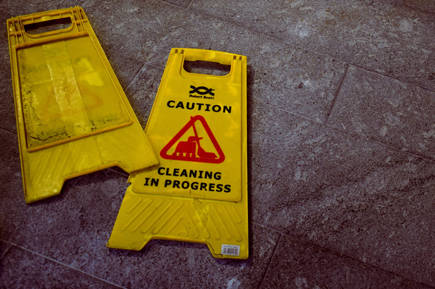An engaged employee is a safe employee. A study by Gallup found that employees in high engagement workplaces reported fewer accidents, with 25% of the top engaged workplaces experiencing 70% fewer incidents than those in the bottom 25%.
The importance of increased employee engagement in safety is clear. Managers should aspire to create an environment that keeps employees excited about safety. A different study by Queen’s University reveals 20% lower absenteeism in engaged workplaces. Employee turnover also decreases by 26%.
How can you reap these benefits for your company? There are steps you can take to increase employee engagement today.
1. Optimise Safety Training
Teaching adults is very different from teaching children. Participatory methods that take advantage of their life experiences will create success. When you tweak programs to suit the participants, it increases adoption. This way, you achieve integration of the training into daily work activities.
Personalise the Benefits
A strong training program focuses on making safety as personal as possible. It should not be about helping the company meet regulatory requirements. A personal touch ensures workers are happy to protect their future. Personalisation includes:
Personal Perspective
What’s in it for them? Adults are juggling many things at the same time. Show how the training can improve their lives and watch them get interested. Lead with personal benefit instead of compliance. When they understand safe work practises ensure they get to watch their kids grow, they pay attention.
Benefits Outweigh the Burden
When listing the safety regulations, frame them in a way that caters to the worker’s needs. For example, if they have to wear a respirator mask, talk about the effects of inhaling dust on long term health. Once they realise the true repercussions of dangerous work are personal, things change. They’ll comply from a sense of self-preservation.
Compliance Benefits the Workers and the People in Their Lives
Encourage long term thinking that prioritises safety versus getting a task done. When a worker lives for today, they can be reckless and sustain an injury that leaves them unable to work in the future. Make this clear during the training. It will shift mindsets and help them to understand the importance of staying safe.
Use Engaging Teaching Techniques
Once you get your training material right, check your delivery techniques. Create a teaching plan that is mindful of instruction time. Ensure you leave participants with actionable tips and knowledge. Avoid training sessions that feel like a waste of time.
You can improve your sessions in the following ways:
The Ideal Session Length
Do you understand the psyche of an adult learner? While they’re able to sit through 90 minutes of instruction, they retain only 20. Break the training into themes and include breaks to prevent eyes from glazing over. Try toolbox talks to breakdown the material into bite-size chunks. A good example is this kit from OSHA
Build Behavioral Objectives
These are training objectives that enable you to measure effectiveness. Use SMART goals which are Specific, Measurable, Achievable, Relevant and Timely. Strong training programs help in creating behavioural change. Set behaviour objectives that cater to the unique nature of your audience.
Define the audience and consider whether your content matches their needs. Identify the exact behaviour that needs to change as a result of training. Use the training to fill skill deficits.
2. Adjust Your Leadership Style
The main component of participative management is collaboration. Leadership goes beyond enforcing rules and directing your workforce. It involves fostering collaboration through empowerment and problem-solving.
Consult Staff in Health & Safety Concerns
A common mistake by managers is viewing employees only as a way to get things done. They do not give them a chance to contribute. Avoid these mistakes through the following:
Listen to What Employees Have to Say
Employees feel valued and engaged when what they say is appreciated. Create an environment where you consider the issues and suggestions raised by employees. It will encourage them to take ownership of their work.
Engage Employees in Decision Making
Managers assume they have all the information needed to make decisions on safety. Valuable insight comes from the intellect and experience of employees on the frontline. Learn to consult before making a decision that affects how people do their work. The best tool for improving safety is leveraging insights from the people who do the work.
Ask for Input
Questions are the best tool for a good manager. Some employees never step forward with solutions yet they offer answers when asked. Ask for the thoughts of your employees to be a truly participative manager.
Managers Should Lead by Example
Prove that you are trustworthy by delivering on commitments and promises. Don’t make unrealistic promises while attempting to win cooperation. Broken promises breed resentment and a wedge between management and staff. Only promise what is possible to reassure your team that you’re working for their welfare.
Remember that your team is always watching what you’re doing. They are likely to do exactly what you do since it shows your values. When you use your position to set a positive example, everybody will follow it. The staff also know you are a person of integrity who believes in the policies they create.
Make it a habit to interface with the staff by walking around to mingle and talk to them. It’s hard to take directives from a boss who is absent so become accessible. Take a walk around to listen and chat with your team.
Use Positive Reinforcement to Build Habits
Humans are creatures of habit and will always do more of the things that bring good consequences. With positive reinforcement, you encourage a culture of ownership and safety. Praise the efforts your team makes. Practice positive reinforcement through these simple steps:
Recognise and Reinforce Employee Achievements
The simple things make the biggest difference. Thanking the team for a continued period of safe operations or praise for valuing safety will go a long way. Employees are happy to go above their job description when efforts are acknowledged and praised.
Share Information and Insights
Create a feeling of inclusion by keeping everyone in the loop. Become a great leader by creating communication systems between all employee levels. Participative communication is the distinction between good and great leadership
Support Ongoing Employee Development
Provide resources and support to help your employees succeed in their project. These can be things like sparing time for a review to lending a listening ear for a decision they need to make. Sometimes this support is a form of training that can empower them.
3. Create a Culture of Safety
Culture is how things get done in your company. It’s not enough to create a great training program and train your staff. You need systems that encourage people to include safety as a part of their day to day work. Here are some practices that you can implement to get started:
Introduce Safety From the Recruitment Stage
The interview process is more than a chance to know the candidates. It’s a chance to show your company’s core values and priorities. From the start, prospective employees should understand that safety is your central value. Do this through simple things like safety reminders around your workplace. Include safety training in the onboarding process.
Create Open Communication Channels
Employers must focus on listening, considering and respecting the ideas from your employees. It encourages your team to come to you with concerns and solutions. Invest in their future by providing the safety skills that they need. When you keep your staff empowered, they become confident and foster a culture of safety. Get your staff excited about safety, to encourage them to be accountable to each other.
Review the Safety Processes
Are your uniforms and equipment up to date? Provide your team with the recommended tools and uniforms for your industry. To manage uniform logistics, get a reliable vendor who understands safety regulations. It will save you time and heartache.
To encourage accountability, choose safety reps that lead their peers through safety exercises. They can be great assets in encouraging your staff to share their point of view, which in turn can prove an invaluable insight into improving your current safety processes.
Conclusion
The steps to improving safety in your organisation are fairly simple.
You need to change your leadership style, review your training materials and create a culture of safety.
With consistency and a commitment to implementation, your organisation will become safer in a sustainable way.
Article contribution by Alsco New Zealand. Alsco aims to help create a healthier and safer workplace by providing affordable yet high-quality uniform rental service and hospital-grade first aid solutions.
Photo: Wallpaper Flare




